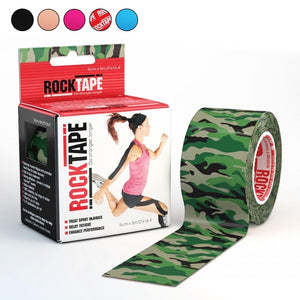It’s your choice - with our knowledge.

Understanding the Role of Kinesiology Tape in Improving Recovery
Kinesiology tape is a stretchy therapeutic tape that has become increasingly popular among athletes and physical therapists for its role in enhancing recovery and performance. Here’s a simple breakdown of how it works and why it might be a useful addition to your recovery toolkit.
What is Kinesiology Tape?
Kinesiology tape is made from a cotton blend with elastic properties, allowing it to stretch. It's applied over muscles, joints, and tendons to provide support without restricting movement.
How It Works
When applied correctly, kinesiology tape slightly lifts the skin from the tissues below. This lifting effect creates a small space to reduce pressure, improve blood and lymph circulation, and decrease pain.
Benefits of Kinesiology Tape
Kinesiology tape can be used for various purposes, and its benefits extend to several areas:
Pain Relief
One of the primary uses of kinesiology tape is pain management. A tape such as SPORTTAPE K Tape helps to alleviate pain by taking pressure off pain points. It also stimulates nerve receptors in the skin, which can help to reduce pain signals sent to the brain.
Reduced Swelling and Inflammation
By lifting the skin, kinesiology tape promotes a decrease in inflammation by improving circulation. This enhanced circulation helps in quicker removal of waste products and increases the flow of oxygen and nutrients to the muscles, speeding up the healing process.
Support and Stability
A kinesiology tape like RockTape Kinesiology Tape provides support to muscles and joints without the restriction of movement that conventional athletic tapes might cause. This support helps to prevent injury and can also facilitate the body’s natural healing process.
Enhanced Performance and Recovery
Athletes often use kinesiology tape to help them recover from intense exercise. The tape not only supports muscles but can also improve muscle activation, which is crucial during both performance and recovery phases.
How to Use Kinesiology Tape
Application Tips
- Skin Preparation: The skin should be clean and dry. Remove any body hair and oils, as these can prevent the tape from sticking properly.
- Application Method: Stretch the tape only if necessary. Overstretching can cause skin irritation or discomfort.
- Aftercare: Rub the tape after application to activate the adhesive. Avoid getting the tape wet for at least an hour to allow the glue to set.
When to Use It
It's best used during or after activities that strain your muscles. You can wear it for several days as it is designed to withstand moisture and can be worn during showers, swimming, or sweaty workouts.
While kinesiology tape isn’t a cure-all, it can be a valuable tool for managing pain, reducing inflammation, and supporting muscles and joints. Whether you’re recovering from an injury or looking to enhance your athletic performance, kinesiology tape might be worth considering.
It’s your choice - with our knowledge.








































































































